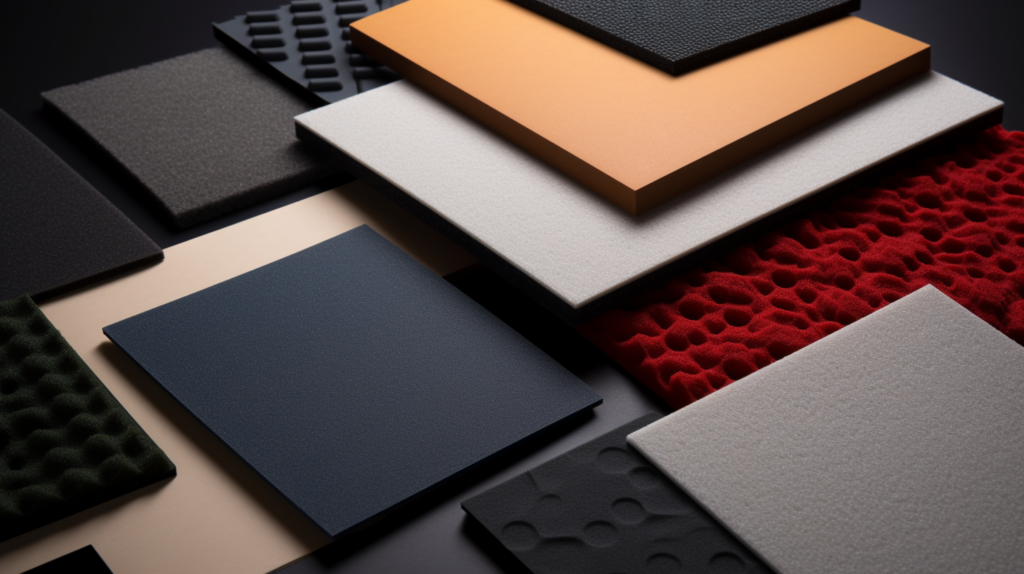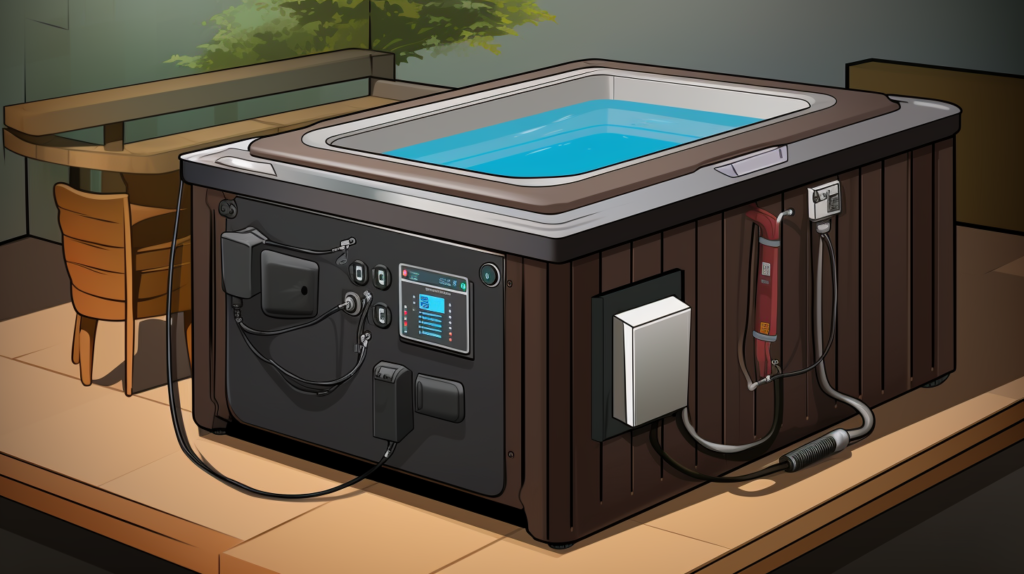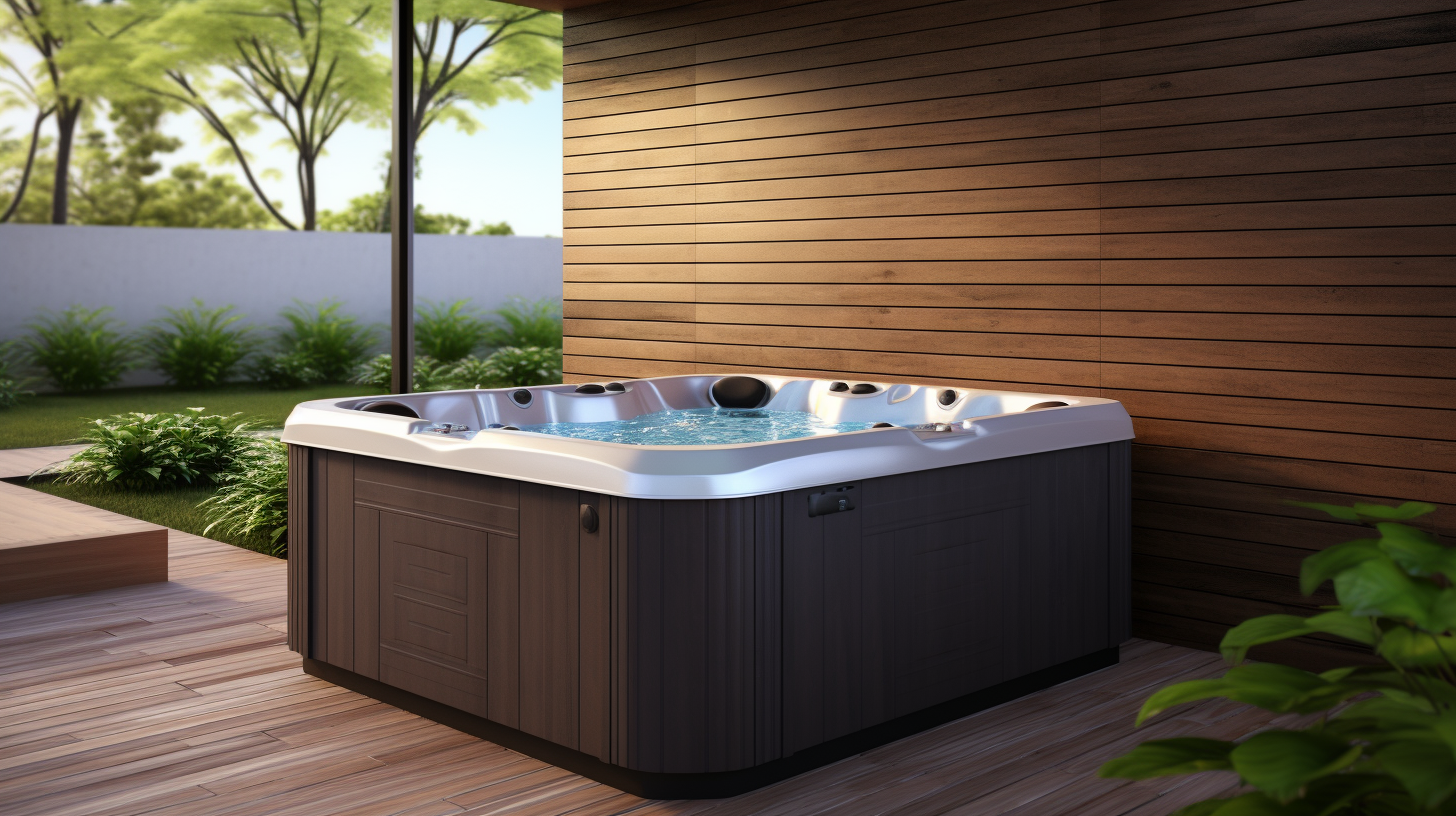Is your hot tub motor droning so loudly that it’s ruining your relaxing soak?
Soundproofing your hot tub motor is easier than you think and delivers immense noise reduction benefits.
Let’s dive in to the straightforward process for maximizing soundproofing on a hot tub motor.
Why Should You Invest Time And Money Soundproofing Your Hot Tub Motor?

There are several compelling reasons why you should make the effort to properly soundproof your hot tub motor.
The most obvious reason is it dramatically cuts down on noise pollution from the motor that can negatively impact you, your family, and nearby neighbors.
Hot tub motors and pumps create a loud constant humming during operation and strong vibrations that carry surprisingly far and easily penetrate through building walls.
The standard factory hot tub cabinet offers little sound insulation, so noise travels freely from the equipment bay, especially in the direction the louvers face.
Properly soundproofing the motor contains almost all this noise and prevents it from broadcasting outwards, creating a much more peaceful environment around the hot tub installation.
Neighbors will no longer be bothered by hot tub motor humming late into the night. You and your family will not be driven crazy by the drone every time you want to use your hot tub.
Another excellent reason to soundproof your hot tub motor is it enables you to completely relax in the hot tub without the irritating distraction of noise from the equipment.
For many homeowners, the primary reason for buying a hot tub is creating a soothing oasis right on their property where they can de-stress and unwind.
It’s almost impossible to fully decompress when there is an obnoxious loud droning just a few feet away from the hot tub waters.
The motor noise ruins the relaxing ambiance people desire when making such a significant backyard addition.
Properly insulating the equipment bay to silence the motor fosters the type of tranquil hot tub experience people seek.
Finally, soundproofing the motor also greatly enhances the overall enjoyment for any other family members or guests who use the hot tub.
Loud equipment noise tends to discourage conversation and relaxation when soaking together, negatively impacting the experience.
A properly muted motor creates a peaceful environment where you and others can unwind, talk, and enjoy the benefits of hydrotherapy.
In summary, soundproofing requires an investment of time and money, but the benefits of owning a whisper-quiet hot tub that doesn’t disturb the whole neighborhood make the effort well worthwhile.
The reduction in daily life aggravation will be immediate and immense.
Purchase These Critical Materials To Complete The Soundproofing Project Successfully

To complete a soundproofing project on a hot tub motor, you don’t need a lot of fancy materials.
The basics can be purchased affordably at any home improvement store or ordered online from a spa parts supplier.
Here are the key items you need:
First and most important is a sound damping mat made of dense rubber or possibly neoprene. This provides a vibration-absorbing buffer layer between the motor equipment and cabinet floor.
The mat absorbs vibrations that would otherwise translate into humming noise. Be sure to get one sized to properly fit under your entire motor and pump assembly.
A minimum 1/4 inch thickness is recommended but 3/8 or 1/2 inch mats provide even better damping.
Second, purchase a high quality flexible acoustic sealant designed for outdoor use, such as a marine-grade silicone.
This is critical for sealing gaps between cabinet panels, filling cracks, and adhering soundproofing foam.
Look for a sealant that can withstand humidity, rain, UV rays, and temperature extremes without cracking or failing prematurely.
A sealant designed for filling boat and RV seams is ideal.
Third, get sheets or panels of dense soundproofing foam made from rigid fiberglass or mineral wool.
The foam will be custom cut to size and used to line the interior cabinet walls surrounding the motor equipment bay.
1 or 2 inch thick sheets provide optimal sound blocking for this application. The foam prevents noise created by the motor from transmitting outward through the cabinet walls.
Finally, you may want an extra strong adhesive formulated to bond insulation foam products to cabinet walls for a permanent installation.
Certain foam adhesives contain added fillers and compounds that expand slightly to fill gaps as they cure.
This helps eliminate any hidden air pockets between foam panels and cabinet walls that could allow noise leaks.
Take These Steps To Prepare For Success Before Starting The Project

Completing a few simple preparatory steps before cutting any foam or sealant ensures the best possible outcome for maximum noise reduction:
First, switch off electrical power to the hot tub at the circuit breaker panel to avoid any shock hazard.
Lock out the breaker to prevent accidental power restoration before the project is complete.
Also drain out all water from the hot tub plumbing using the drain valve. This allows safe access to the equipment bay.
Next, use a power screwdriver to remove exterior cabinet panels necessary to access the equipment bay housing the motor, pumps, heater and associated plumbing.
Remove panels on as many sides as possible to allow soundproofing access from all directions.
Store hardware such as screws in labeled bags for simplified reinstallation.
Then thoroughly clean the motor, pumps and other components you intend to apply soundproofing materials to using a degreaser solution.
Eliminate any oil, dirt, grime, or debris so your soundproofing materials adhere properly.
Scrub surfaces as needed to prepare the equipment for maximum adhesion. Proper adhesion is critical for noise reduction.
Finally, inspect and tighten any loose equipment mounting hardware that could transmit vibration into the cabinet.
Use a wrench to check bolts securing the motor, pumps, and heater to the equipment pad.
Tighten any loose bolts to eliminate play in the mounts. Do the same for any loose control box screws. Preventing vibration at the source is the first step.
With these preparatory tasks complete, you’ve maximized conditions for soundproofing success. Now the real work can begin!
Step-By-Step Instructions To Install The Soundproofing Materials For Maximum Noise Reduction

Follow these detailed steps to methodically install the various soundproofing materials you purchased for optimal noise blocking:
First, install the thick rubber sound damping mat underneath the motor and pump assembly so it supports the entire underside surface. Cut if needed for easy positioning.
The mat creates a vibration isolation barrier between the equipment and the floor where resonance can amplify noise. If you purchased peel and stick mat, remove adhesive backing and press firmly to adhere to the floor.
Next, remove backing tape and apply a 1/4″ bead of acoustic sealant completely around the perimeter edge of any panels that will mate or join other panels during reassembly.
The sealant plugs gaps in seams and joints where noise leaks out.
Focus on where tongue and groove or other interlocking cabinet panels meet. Smooth and flatten the sealant bead with a wet finger for best adhesion.
Then, measure the interior cabinet walls in the equipment bay and cut pieces of rigid foam to cover each surface, including the floor if not already covered by mat.
Cut pieces 1/4 inch smaller than measurements for a tight friction fit.
This forms a surround sound barrier preventing noise from transmitting through the walls. Have an electric carving knife handy to trim pieces for exact fit.
Now coat one side of each foam piece with a layer of acoustic adhesive specially formulated for foam insulation per manufacturer instructions.
Carefully press foam pieces into place on cabinet walls, covering all exposed surfaces.
Use shims if needed to insert pieces fully into corners or tight spots for full contact. Let adhesive cure fully before hot tub reassembly.
Finally, use any adhesive left over to seal small cracks or gaps that may still exist around plumbing penetrations, electrical knockouts, or hardware mounts.
Squirt adhesive deep into gaps and allow to cure to help block noise leaks.
Carefully reinstall cabinet panels once done using original hardware.
With these steps complete, you’ve successfully soundproofed the hot tub motor and pump equipment for maximum noise reduction. Now the fun part – testing your work!
Finish The Job And Evaluate Noise Reduction Results Before Daily Hot Tub Use

You’re nearing the home stretch. To complete the soundproofing project:
Carefully reinstall all exterior cabinet panels using original hardware like screws and corner brackets. Avoid dislodging any foam pieces or disconnecting plumbing.
Take care not to damage power cords during reassembly.
With cabinet fully reassembled, refill hot tub to proper level with fresh water per manufacturer directions. Reconnect power supply to motor circuit and power back on.
Run pumps through normal operating cycles and listen closely for any noise leaks near seams, penetrations, or fasteners.
Make any final adjustments needed to seal small leaks detected and achieve satisfaction.
Compare before and after noise levels. Use a decibel meter app on your smartphone to quantify reduction results.
Share results with neighbors and see if they notice the difference in ambient noise from your hot tub equipment.
Provided preparation and installation steps were properly followed, you should now have a whisper quiet hot tub to enjoy and relax in for years to come!
Let me know if any questions come up on your project.
Extra Recommendations For Further Reducing Any Residual Motor Noise

To fully maximize noise reduction and combat vibration, consider these additional tips:
Install dense rubber vibration isolator pads under the entire hot tub structure to prevent transfer of any residual motor vibrations into the floor or decking the hot tub sits on.
Look for isolator pads rated for the fully loaded tub weight.
Adhere mass loaded vinyl sheets – used for soundproofing walls and ceilings – to the interior cabinet walls using acoustic adhesive if unable to attach foam panels in certain areas.
The thick dense vinyl creates a sound barrier.
Check mounting bolts securing the motor, pumps, and equipment pad annually for corrosion and replace any degraded bolts with new marine-grade stainless steel hardware.
This maintains a permanent vibration-free installation.
Following the recommendations in this guide will allow you to soak and relax in your hot tub without noise disturbance.
Conclusion
Properly soundproofing your hot tub motor takes some effort, but the payoff is huge in terms of noise reduction and improved relaxation.
Following the steps outlined here will lead to a whisper-quiet hot tub you can enjoy without disturbances.
The reduction in stress will be immediate once that loud humming is eliminated. Give soundproofing a try and let me know how it works for your hot tub installation!
